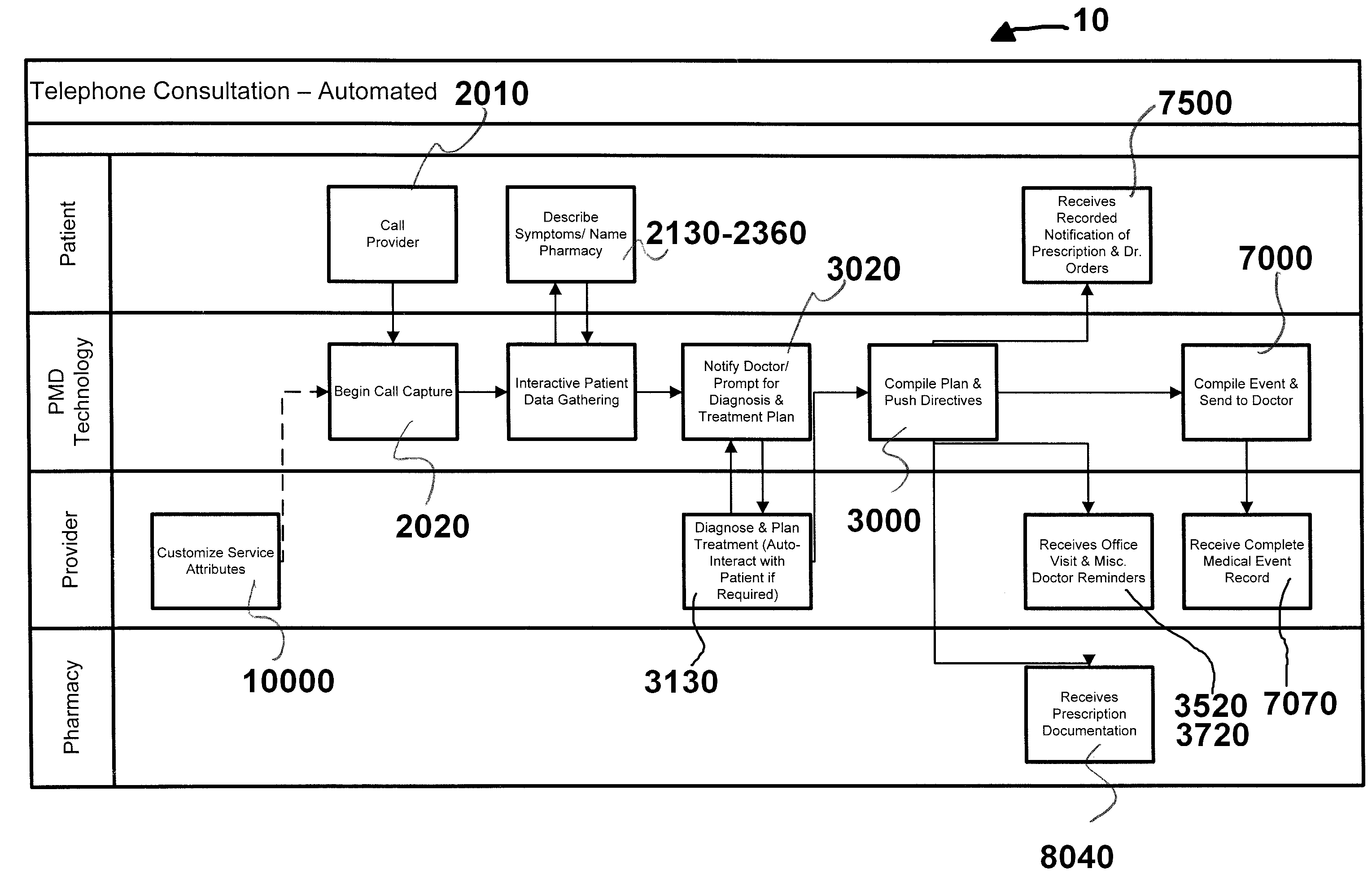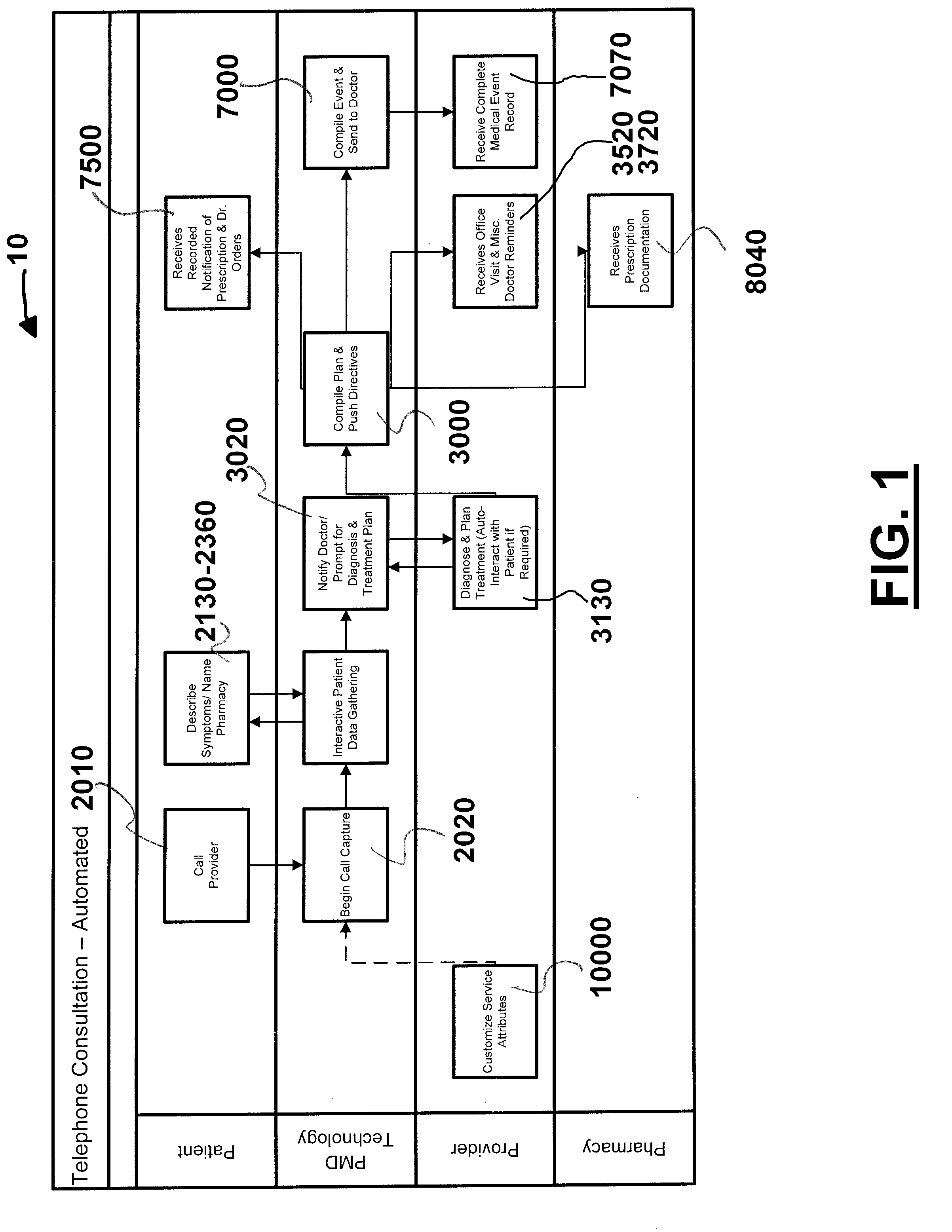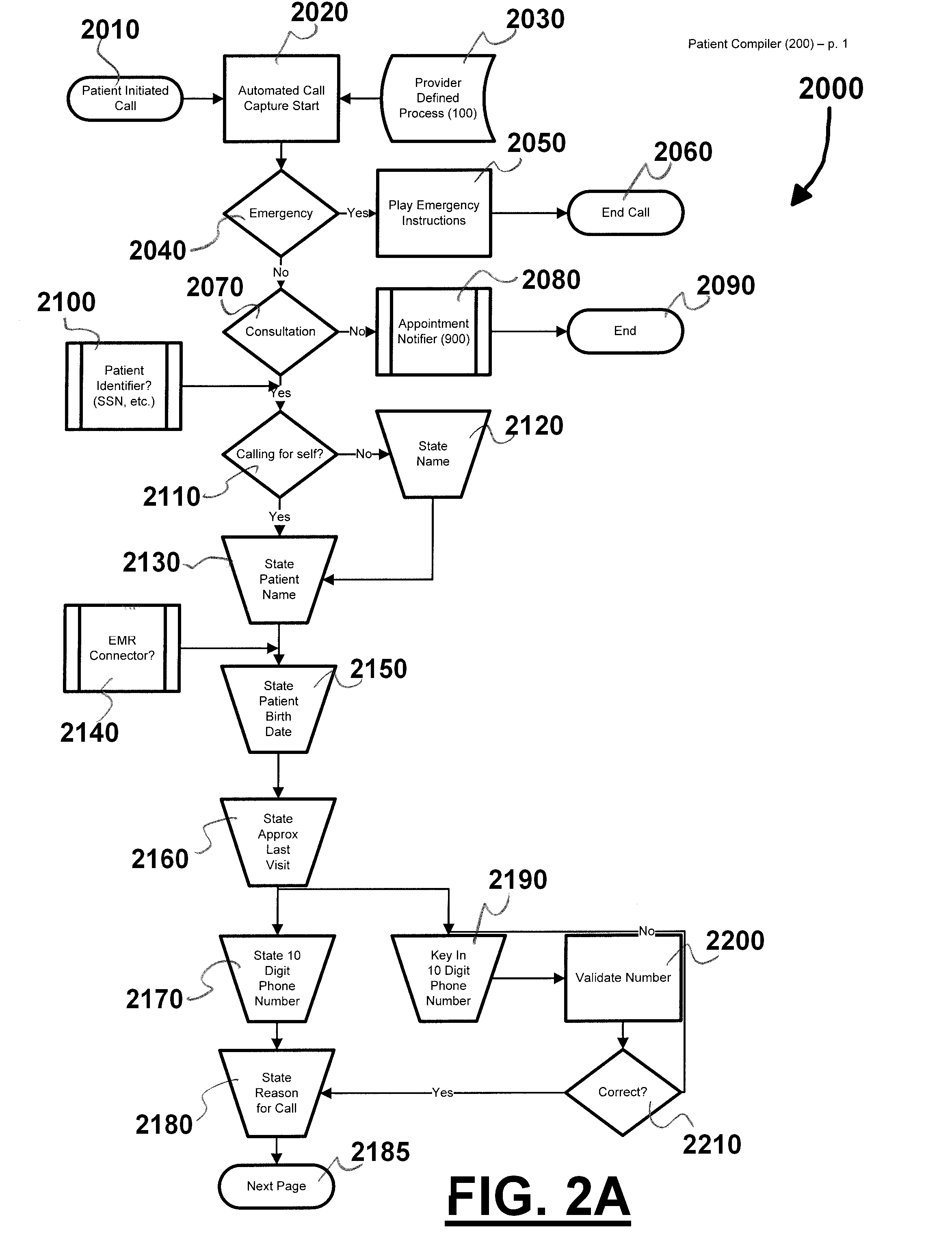Method and apparatus for indirect medical consultation
a technology for indirect medical consultation and methods, applied in the field of indirect medical consultation, can solve the problems of increasing the demands of services, limited time, and time-consuming for health care providers, and achieve the effect of improving the standard of care and efficient use of tim
- Summary
- Abstract
- Description
- Claims
- Application Information
AI Technical Summary
Benefits of technology
Problems solved by technology
Method used
Image
Examples
Embodiment Construction
[0116]Detailed descriptions of one or more preferred embodiments are provided herein. It is to be understood, however, that the present invention may be embodied in various forms. Therefore, specific details disclosed herein are not to be interpreted as limiting, but rather as a basis for the claims and as a representative basis for teaching one skilled in the art to employ the present invention in any appropriate system, structure or manner.
[0117]FIG. 1 is an overall flow chart of the method and apparatus 10 addressing patients with consulting / contacting health care providers outside of providers' offices. Such consultation / contact can be outside of normal business hours for health care providers, or during normal business hours where the patient decides not to, or cannot come to the provider's office. When a need arises the patient can use the method and apparatus 10 to contact the health care provider in seeking medical consultation. The patient can call the health care provider'...
PUM
 Login to View More
Login to View More Abstract
Description
Claims
Application Information
 Login to View More
Login to View More - R&D
- Intellectual Property
- Life Sciences
- Materials
- Tech Scout
- Unparalleled Data Quality
- Higher Quality Content
- 60% Fewer Hallucinations
Browse by: Latest US Patents, China's latest patents, Technical Efficacy Thesaurus, Application Domain, Technology Topic, Popular Technical Reports.
© 2025 PatSnap. All rights reserved.Legal|Privacy policy|Modern Slavery Act Transparency Statement|Sitemap|About US| Contact US: help@patsnap.com



